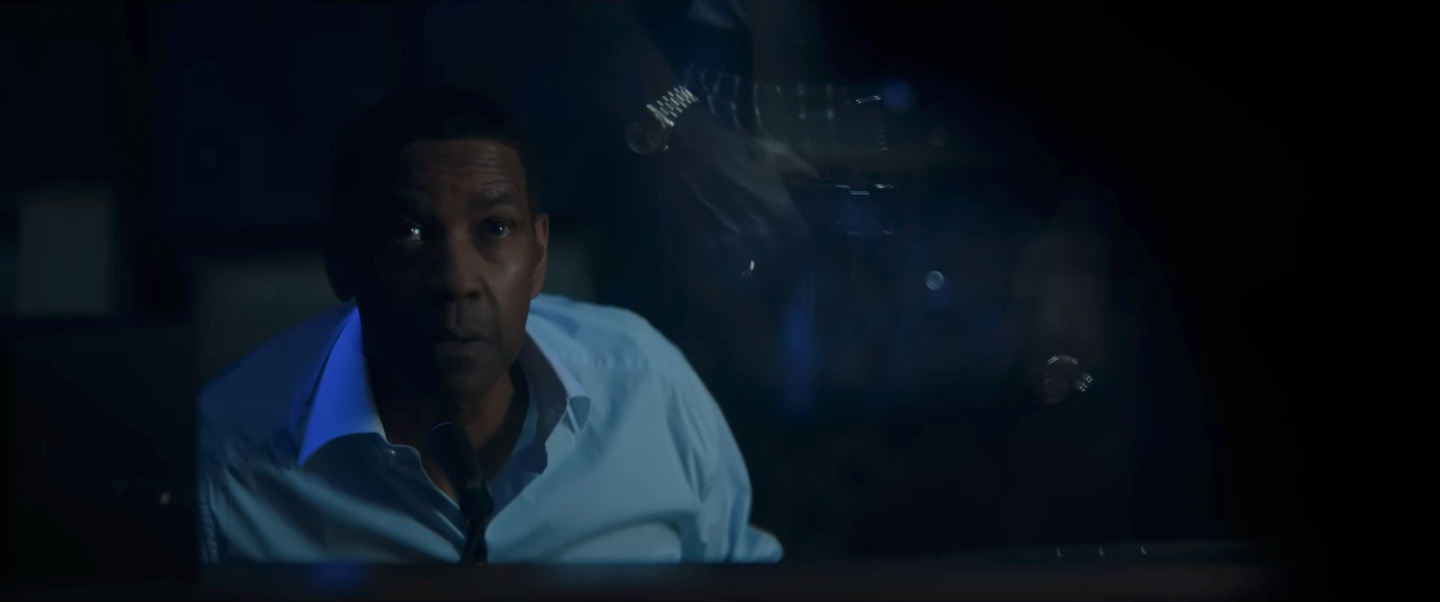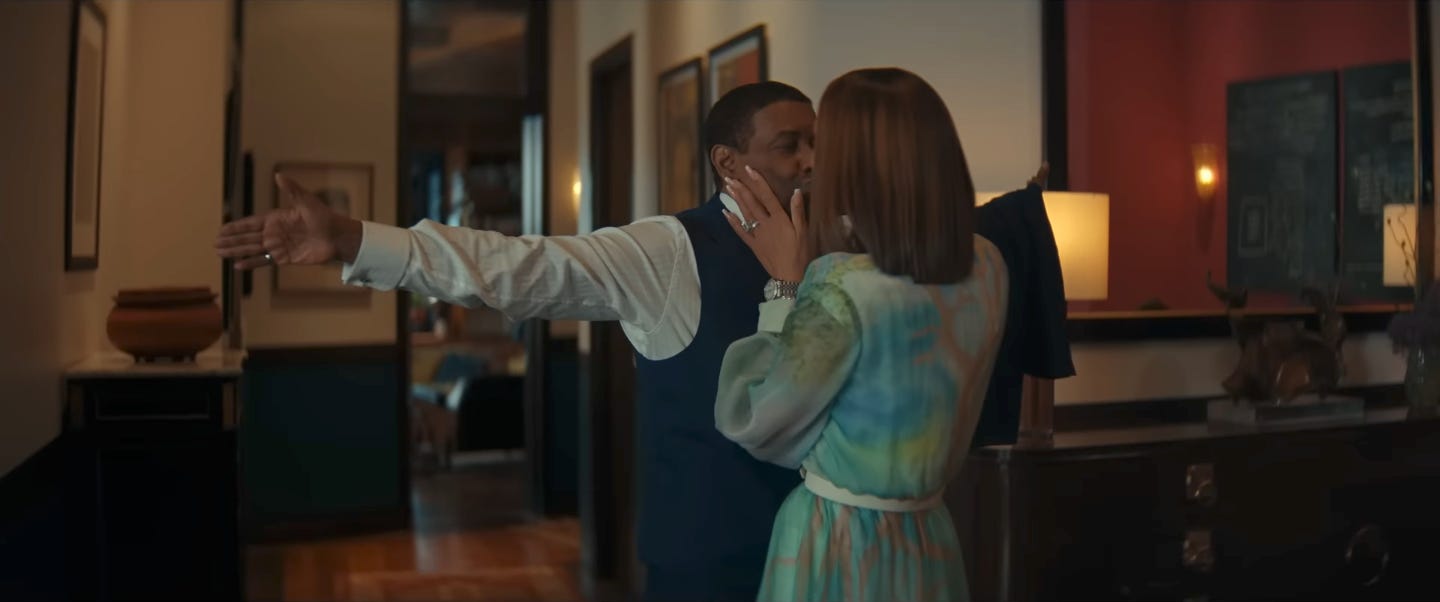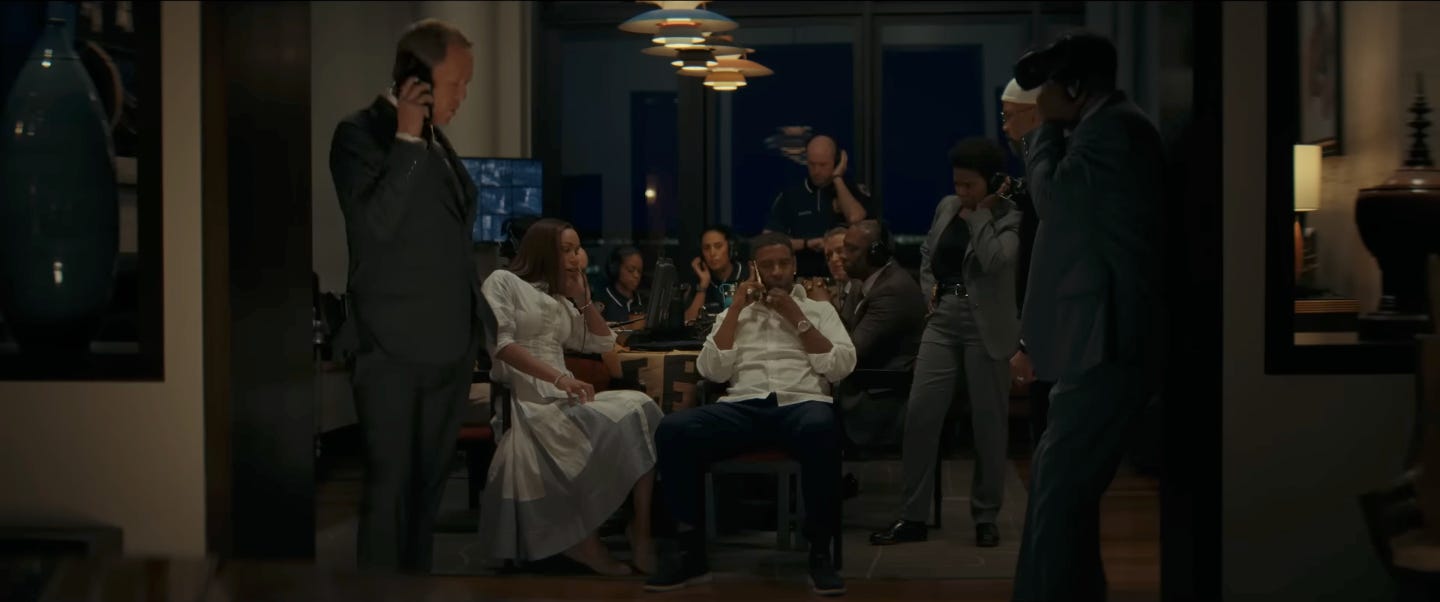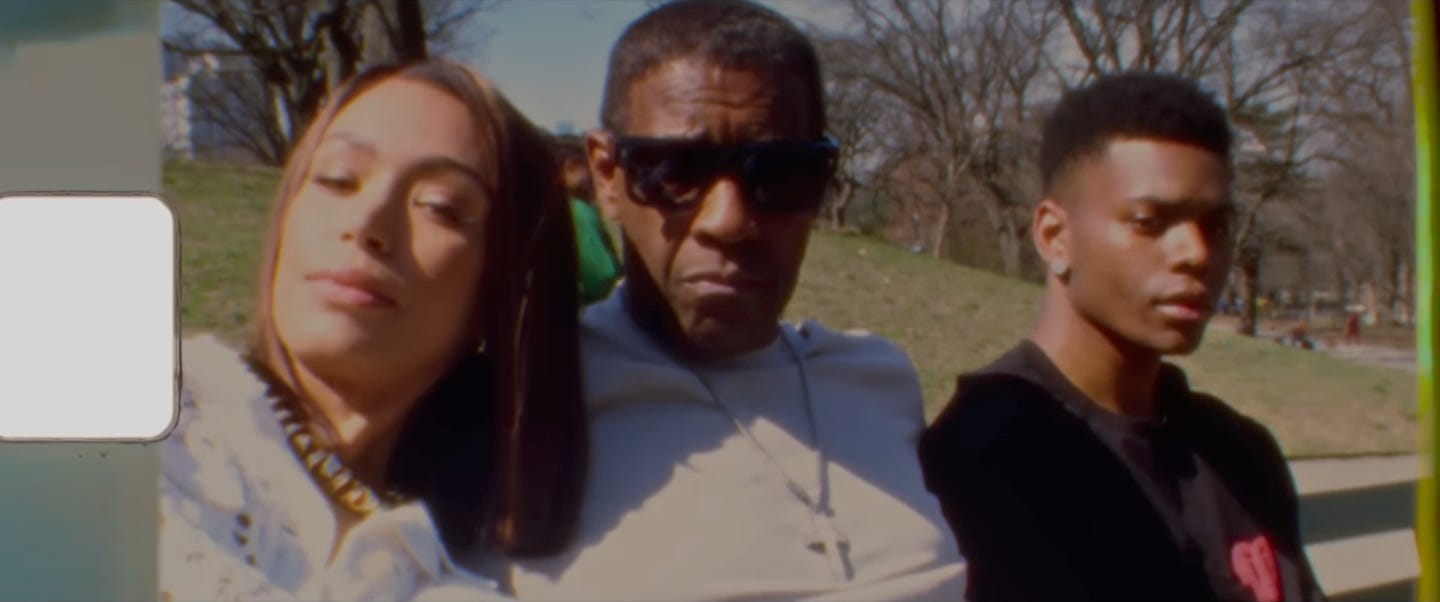high highs, low lows
spike lee presents a masterclass on how not to make a normal movie
My goal with this newsletter is to write about new films as they reach general release and to feature seasonally appropriate commentary on other cinematic events and interests.I’m still catching up on August, this week with some analysis of the bizarre cinematic decisions that went into Spike Lee’s 24th feature (/23rd joint) Highest 2 Lowest. Mild spoilers - but also this is a remake of an 80-year-old film so I think we’re outside the statute of limitations. This newsletter comes out every Friday, which this week actually means Friday.

No one gets to retire anymore, not even legendary auteurs. Highest 2 Lowest is Spike Lee’s first 65+ picture, joining the esteemed ranks of Shutter Island (67), Lincoln (65), Avatar: The Way of Water (68), and Eyes Wide Shut (dead). Lee might have his best years ahead of him (Clint Eastwood has released 24 films since his 65th birthday) or he might be taking his first steps on the short road from Youth Without Youth (68) to Megalopolis (85).
Highest 2 Lowest could be a real signpost for what’s to come, but which direction it’s pointing is up for interpretation. Lee’s 24th feature has all the trappings of a return to form: back to New York, back with Denzel Washington, cinematography by Matthew Libatique, score by Howard Drossin, editing by Barry Alexander Brown. On paper, it’s a triumph. On screen, it’s - something else.
One word you might use to describe it is “bad.” Highest 2 Lowest does a lot of things, very few of them normal or objectively pleasant. A quick list of its cinematic offenses:
Obvious cameras: glaring jumps between Soderberghian digital to B-movie 16mm.
Bad editing: Dragnet-style dialogue cuts, doubling, clear lack of coverage.
Invasive soundtrack: a droning piano score that bleeds from scene to scene with no regard for movement or emotion.
Sloppy writing: endless exposition, corny intrusions, wooden dialogue.
Terrible ADR: mouths doing all sorts of things that have nothing to do with the sounds coming out of them.
Goofy set dressing: Even if you don’t pay attention to any of these things, it’s impossible not to notice the framed Kamala Harris poster hanging in a teenage boy’s bedroom.
Is Spike Lee going batty, or is he Doing Something? When this many talented people do this many things wrong, you have to wonder if something’s up. Out of respect for the elderly, let’s work through the production patterns and see if Old Man Spike is trying to teach us something.
Highest 2 Lowest is based on Akira Kurosawa’s 1963 noir High to Low, a police procedural set mostly inside a living room overlooking Yokohama. It’s a fairly perfect and starkly pessimistic film built around themes of economic inequality that will probably be relevant forever. Lee translates Kurosawa’s plot to contemporary New York: Denzel Washington is David King, a record producer in a Brooklyn penthouse, on the verge of some sort of deal before a botched kidnapping blows up his life. Will he drain his finances to pay his son’s friend’s ransom? Or will he put his business first? His decision takes him on a journey from the Highest levels of New York society to (2) the Lowest. If you’ve seen the original, you sort of know how it goes. If you haven’t, you can probably guess.
As usual, Lee tells his story in broad, impressionistic strokes that expose the artifice of his filmmaking. This is a feature, not a bug, and among the reasons that he prefers to call his features “joints” instead of “films.” Lee’s style has changed over the course of his 40-year career, but consistent elements include 180-degree dialogue cuts, whacky angles, magic dolly shots, and smash-cut insertions of still images and head-on dialogue from outside the mise-en-scène. There’s a musical element to his filmmaking (Matthew Libatique equates it to jazz improvisation), and when it works it captures a rhythmic quality of New York street life that few other filmmakers can match. It’s only natural that Highest 2 Lowest, which rather explicitly takes place high above the street, is cut to a different rhythm. The problem is that the rhythm is off - so far off that its either intentional or an indicator of impending senility.
First, there’s the camera. In the Highest scenes, Matthew Libatique shoots on digital with an anamorphic lens - a wide (or “short”) lens that compresses panoramic shots into a narrower aspect ratio. Anamorphic lenses work great when they’re capturing broad landscapes for widescreen formats, as seen in the drone-filmed cityscapes of H2L’s opening sequence. They’re less effective for dialogue-based scenes composed of mid and close-up shots. Libatique doesn’t seem to care and sticks with the anamorphic lens when he’s inside King’s apartment. The result is a myopic over-intimacy where the distorted edges draw in around an uncomfortably close center. The camera focuses on too much and nothing at all at the same time. It looks a bit like what a room would look like to eyes used to gazing out over the Manhattan skyline through a picture window - and, will you look at that, that pretty much describes King’s living room.


The over-enveloping lens pairs devastatingly with Lee and Barry Alexander Brown’s editing. Their cuts are furious and constant - there’s one after nearly every line of dialogue (what Walter Murch refers to as the Dragnet cut), sometimes before the line has finished. Shots double up, jump in perspective, shift in tone and audio quality. When you’re trying to convey the power of music to incite a riot in a Bed-Stuy pizza parlor, edits like this can get you some of the great moments in American cinema history. When they’re propelling a scene of a record producer talking to his wife about the impact of a business deal on their personal art collection, they suggest you’re scrambling to create a scene out of two head-on takes and no proper coverage.
Put this hack-job editing on top of a script that luxuriates in exposition and inserts moralizations about Lee’s pet issues (“Can’t we put out an Ebony Report?” “Well, you know, those aren’t currently law in the state of New York”) and then throw in leaden performances from everyone who isn’t Denzel Washington - and you’ve got a Wiseau-esque production that pummels you with reminders that you’re watching a film. The droning score and the furniture-catalog set dressing don’t help. There’s something almost Bressonian about the experience, as if you’re supposed to be alienated by every cinematic component of the film’s opening third, waiting on pins and needles for the transcendental break.
It comes about 45 minutes in, when Libatique follows Denzel onto the 5 train with a reel of low-grade 16mm. Suddenly we’re back in a classic Spike Lee joint; if you weren’t sure, Rosie Perez pops in to make it obvious. Shot documentary style, we follow Denzel and a team of cops through a grainy montage of the Puerto Rican Day Parade and a Yankees/Red Sox pre-game subway rally, interrupted by a chase sequence, motorcycle stunts, and Dean Winters in Kramer mode. The editing is every bit as obvious as the Highest scenes, but the jump cuts and the continuity gaps are easy to accept. You can’t shoot coverage on the subway. You can’t get continuity at a live parade. The grainy film stock reminds the audience that we’re watching a film of something that actually happened, the not-real record of a very real event. The action sequences splice their way into the documentary, and the sloppiness is OK because both filmmakers and audience can accept that film is an incomplete record of beating, breathing, everyday life.
From the parade sequence on, Lee is emboldened to experiment with cinematic form in ways that remind you that he’s good at this. The camera loosens up, art slips into reality, and by the time A$AP Rocky shows up, H2L has transformed into an actually entertaining film. Lee turns High and Low’s prison-barrier conclusion into a rap-battle confrontation fought through studio glass. He shoots a music video sequence in what appears to be a recreation of a Kurosawa set. Jeffrey Wright makes some pretty good insurance-commercial jokes. We go back from time to time to the penthouse and the anamorphic lens, but there’s enough going on outside the apartment that the interior contrivance is tolerable.
Except - as if to keep us on our toes, Lee finds one last thing to get wrong. For most of the film’s final act, the sound is off - either slightly delayed or ADRed - in all the scenes that feature music or communication through glass. Sometimes it feels intentional, a hyper-realist demonstration of sonic delay as sound travels from one side of the glass to another. Other times it feels like a lazy last-minute edit - especially in a shot where words come out of Denzel’s mouth at about three times the speed that he’s moving it.
What is going on here? Off sound is not an acceptable problem, even in an Apple Studios production. If there’s an answer, it comes in the tacked on coda, when Lee moves beyond Kurosawa’s pessimistic conclusion to wedge in a happy ending. Denzel and co. are back above the city, with all the cinematography that comes with it. He’s started a new record label, and he’s brought his family together for an audition. Newcomer Aiyanna-Lee sings a song (it’s called “Highest 2 Lowest”) . . . and it looks like a Sergio Leone movie. The cinematography and the script insist that we’re witnessing a raw and deeply moving performance that gets back to the real music that inspired King in the first place. But Lee can’t avoid the obvious contrivance of the scene: Aiyanna-Lee’s lips do not line up with the sounds coming out of Aiyanna-Lee’s throat.
I don’t know, dubbing is hard, and maybe Lee doesn’t care. But the scene is so artificial, and the film ends on such a gushingly positive note, that I have to wonder if something is amiss. Are we supposed to notice the dubbing? Is Lee communicating the falsity of his optimistic ending, telling us that what we’re seeing is only made possible through the contrivance of a studio, a space where the class barrier is made manifest in the glass wall between exploited artist and exploiter producer, a barrier with a clear analogue in the identical glass pane between prisoner and civilian? Is Aiyanna-Lee just another prize in King’s eyes, rough reality transformed into sonic perfection, the same way his skyline-set eyes distort the geometry of everyday life into a consumer-ready shot? Is this an art film that weaves a story about capital, incarceration, and the exploitation of Black artists through lying cinematography and brutal editing, ultimately coming to a secret conclusion against its script that is every bit as cynical as its source material?
Or did everybody just kind of fuck up? If a movie spends half its time deliberately creating an unpleasant viewing experience, it’s hard to call it a success. I’m a-ok with suffering for my artistic revelations, but I don’t think Spike Lee is that kind of filmmaker. “I make movies for everyone,” he recently told The Ringer. “For everyone.” Does Lee think everyone spend time thinking about the narrative impact of anamorphic lenses? I doubt it.
But maybe you don’t need to think about what’s going on to get the point, the same way artistic realities don’t need to be intentional to have an impact. Highest 2 Lowest tries to tell an optimistic story about the interplay between music and capitalism, and it tries to do that using all the cinematic elements that have driven Spike Lee’s stories about street politics, music, everyday life, etc. But it turns out that all of those elements - the improvisation, the rhythm, the urbanity - are antagonistic to the vacuum-sealed contrivance of upper-class life. In the end, you can’t really spin an authentically uplifting story about capitalism unless you lock down coverage, get a normal soundtrack, and stay away from 16mm. Whether it’s is an intentional interrogation or a failed attempt at schlock by a guy long past his prime is irrelevant. Art doesn’t have to be good for you to learn something from it. And old men don’t have to be right to accidentally teach you something.

Thanks for reading *life is disappointing.* If you found this newsletter slightly less disappointing than the rest of your life, consider liking, commenting, sending me money (thanks!) or subscribing. Subscribing will get you exactly what you get here but sent to your email inbox. We’ll be back next week with Darren Aronofsky's (and Matthew Libatique’s!) latest, plus David Mackenzie’s Relay.



